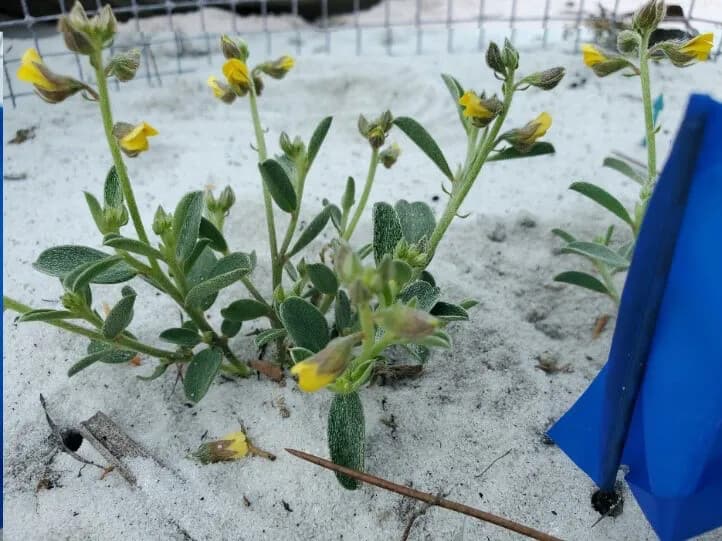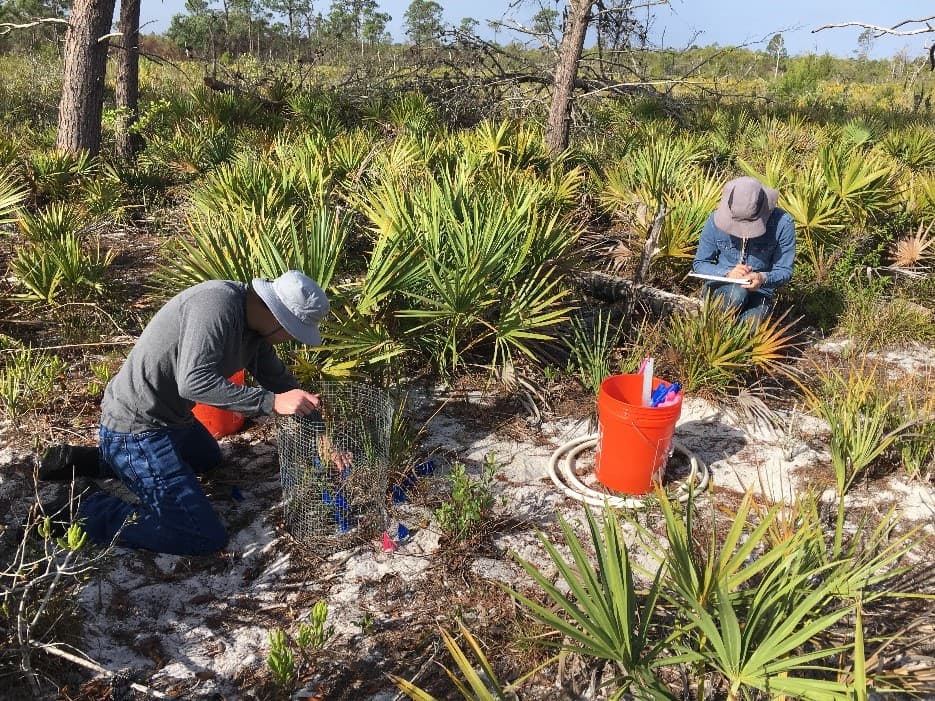
Saving the Rarest of the Rare: Avon Park Harebells
Author: Andee Naccarato
May 24, 2023
Avon Park Harebells (Crotalaria avonensis) is a low growing herbaceous plant in the pea family with small yellow flowers endemic to Florida (found nowhere else). It prefers to grow in, and is adapted to, high and dry scrub habitats found on the Lake Wales Ridge, a ribbon of ancient sand dunes that runs down the middle of peninsular Florida. Much of this high and dry scrub habitat has been converted to other land uses that are not compatible for Avon Park Harebells, so this plant now naturally occurs in only three places between central Highlands and southern Polk counties. Due to loss of habitat, its low rate of seed production, and other factors, this is one of the rarest plants in Florida and according to the US Fish and Wildlife Service; it is ‘at grave danger of extinction’ and ‘without active and concerted conservation efforts, this species may be lost’.
In an effort to prevent the extinction of Avon Park Harebells, plant ecologists from Archbold and partner organizations collected seeds and stem cuttings more than ten years ago from wild plants found in a residential neighborhood to propagate. Led by Dr. Eric Menges, former Archbold Plant Ecology Program Director, seeds and plants propagated by Bok Tower Gardens and Cincinnati Zoo and Botanical Garden were introduced to a state-owned preserve in 2012. The team chose the specific planting sites because they had high and dry white sand scrub habitats managed with prescribed fire within the limited native range of Avon Park Harebells. Additionally, ecologists enclosed the plantings with wire mesh cages to discourage wildlife from eating the lush foliage, attractive flowers, or plump seedpods.
With assistance from dozens of research assistants and interns, the project leads have monitored more than 800 planting sites in addition to a nearby wild population at least three times per year, keeping track of seed germination, plant survival, and any signs of reproduction (including flowers, seed pods, or elusive seedlings).
According to Andee Naccarato, “We check on these plants frequently because they can survive part of the year as a taproot underground. If we only monitored once a year, we would miss a lot of plants and useful information about their ability to resprout, flower, and fruit.”
Last year, Dr. Aaron David, Director of the Archbold Plant Ecology Program, used the monitoring data to assess survival rates of the introduced seeds and plants. Dr. David said, “We found that it is worth the effort to transplant individuals grown from cuttings, as those plants tend to do pretty well and produce new seedlings, compared to planting seeds which is relatively easier but much less effective at creating a new population.” He continued, “In addition to the higher survival rate of plants produced via cuttings, ecologists also observed more than twenty new seedlings in the population, meaning this introduced set of plants is successfully reproducing and starting a second generation.”
After learning more about how to successfully establish a new population of this very rare plant, Dr. David is starting to plan another introduction of Avon Park Harebells for next year. This vital work is made possible by collaborating with the same dedicated partner organizations, which will be instrumental in collecting stem cuttings, propagating plants, and selecting just the right habitat on preserved land. This is what it takes to save one of the rarest plants from extinction – working together to preserve wild spaces, learn about local species, and care about their survival. Archbold and its partners have worked tirelessly for more than a decade to conserve not just Avon Park Harebells, but many other rare plants found on the Lake Wales Ridge and nowhere else in the world.
 Photo by: Andee Naccarato
Photo by: Andee NaccaratoArchbold Plant Ecology Research Interns monitoring Avon Park Harebells at an introduction site. Photo by Andee Naccarato.